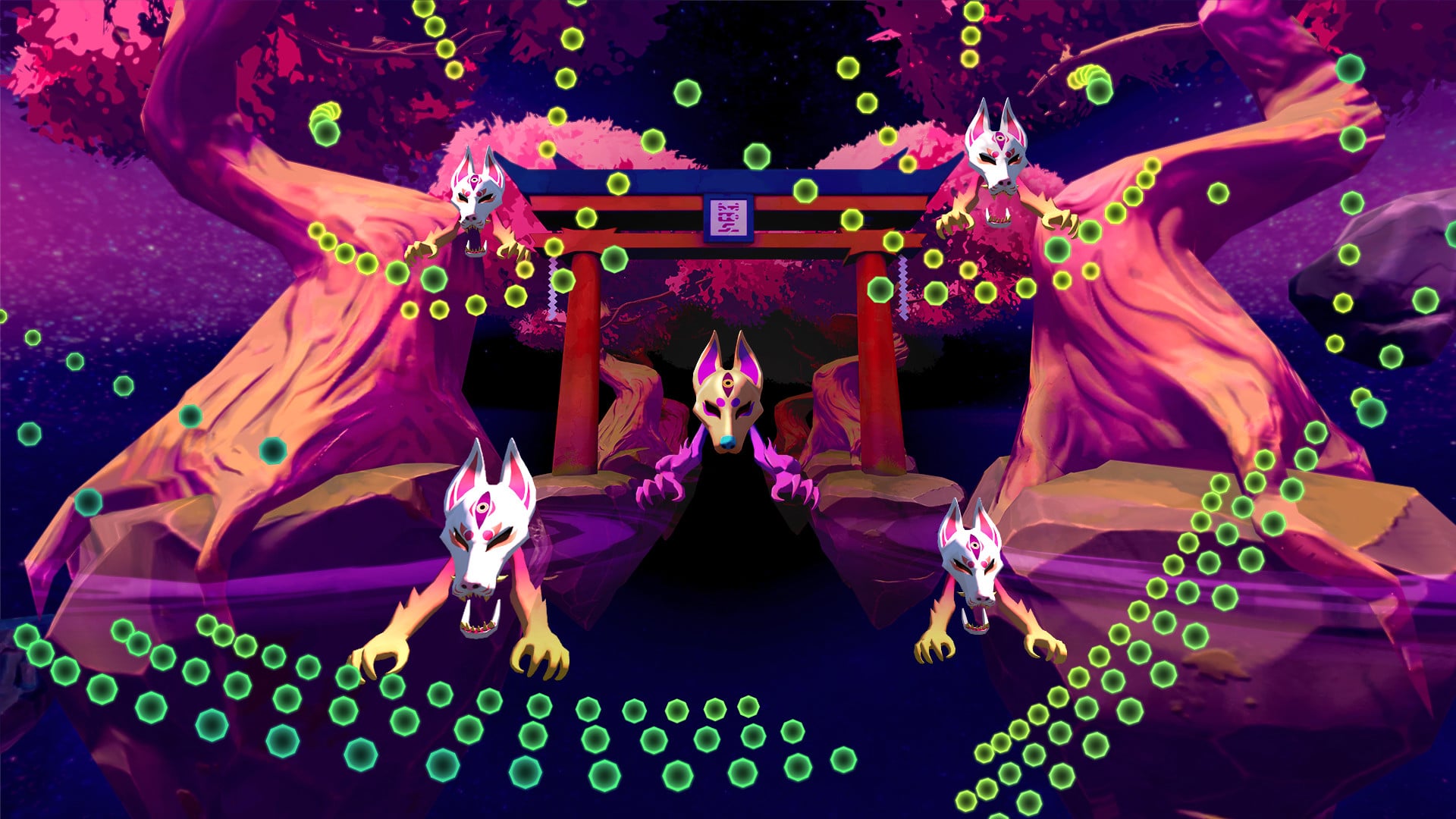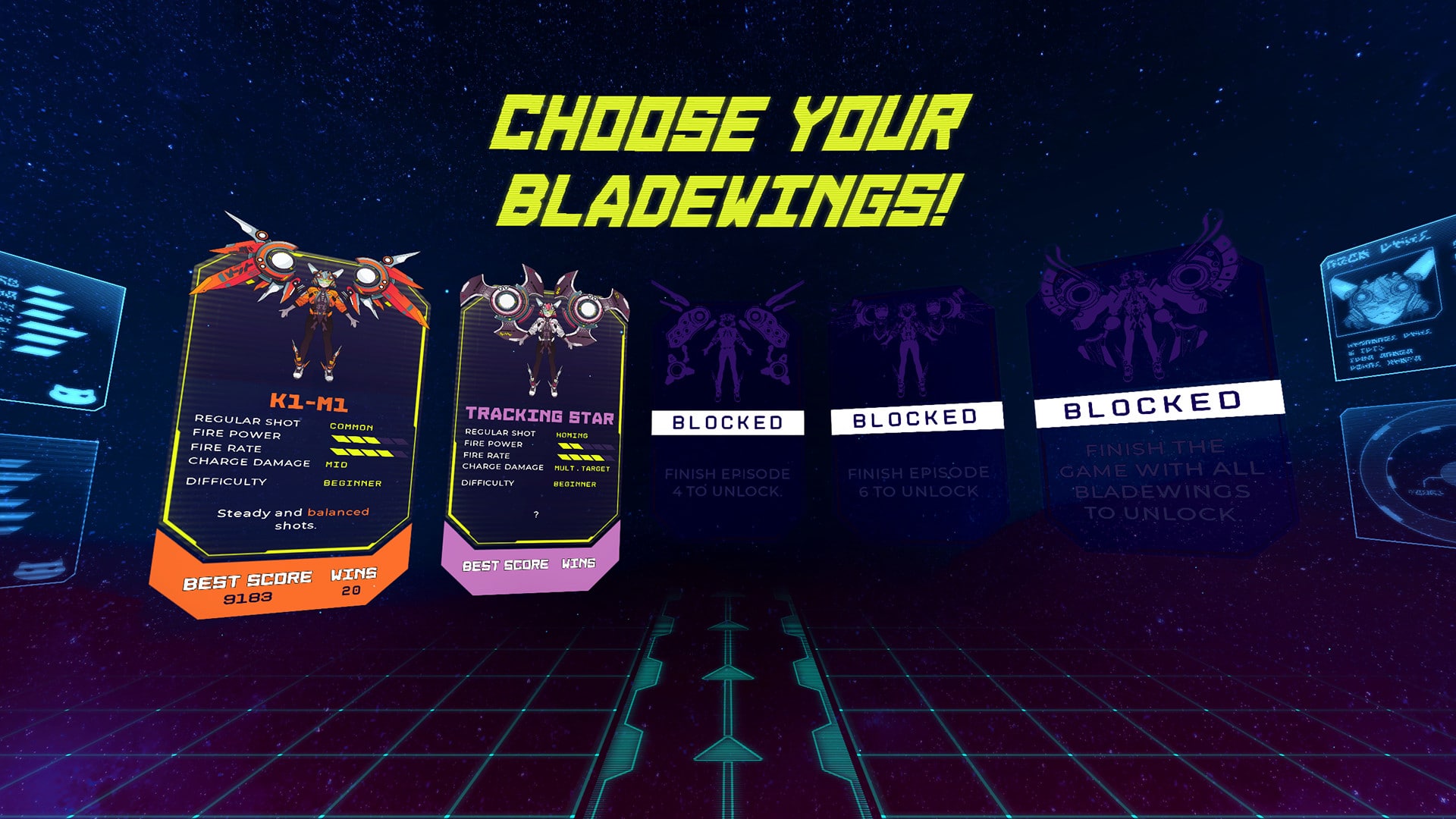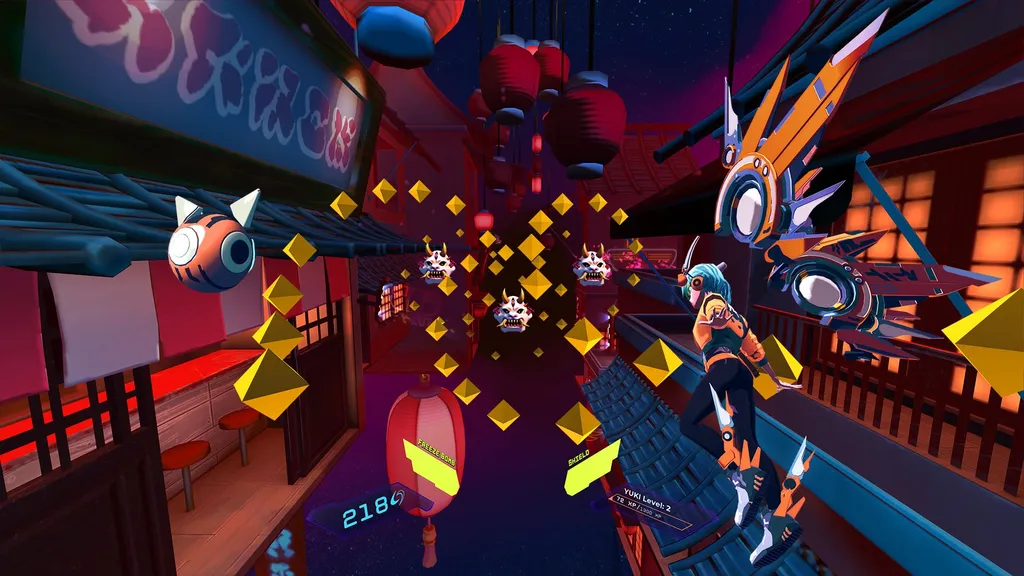ARVORE’s latest VR game Yuki is available today for Quest and PC VR, but how does it hold up against other bullet hell arcade shooters? We’ve spent some time with the game and have our hands-on impressions.
From the team behind Emmy-winning immersive experience The Line and the popular retro VR Pixel Ripped series, Yuki sees you enter the imagination of a child and slowly fly through a series of stunning environments. It’s a bullet hell of creepy enemies and increasingly difficult environmental obstacles.
You would be forgiven for thinking this sounds vaguely familiar — at first glance, the gameplay is very similar to Shooty Skies Overdrive, another VR bullet hell game that released just over a year ago. In both games, your hand (or more accurately, your Touch Controller) turns into a controllable ship and gun combo that you can physically move around the environment to avoid bullets and aim at your enemies.
However, if Shooty Skies Overdrive laid the groundwork for this concept, Yuki takes it and develops it even further, bulking up the replayability and adding in some fun roguelike twists to the gameplay loops. In many ways, Yuki takes all the parts I loved from Shooty Skies and adds some new layers that give depth that was missing from the latter.

Yuki consists of six levels, or ‘chapters’. However, in true roguelike form, dying in Yuki sends you back to the beginning. You’ll have to make it through all six chapters in one run if you want to succeed, carrying over health and temporary power-ups through each chapter.
Luckily, in between runs, you can use resources you’ve collected throughout your previous run to permanently upgrade Yuki and her abilities, granting you more health, better firepower or better options for the in-run power-ups, distributed throughout each chapter.
When replaying chapters, the enemies are randomized and environmental obstacles seem to change as well. The difficulty, frequency and amount of enemies and environmental obstacles also increase with each progressive run, no doubt to keep pace with the upgrades you’re making as you go. In my time with the game, I’ve only managed to make it up to the third chapter, so I can’t weigh in on whether a full 6-chapter run will feel satisfying or grueling just yet, but so far the repetition has felt minimal and still engaging, thanks to new enemies and increased difficulty.
There’s also different types of “bladewings” for Yuki, which change your gun’s stats and bullet types, each with their own individual high score tracker. You’ll unlock new bladewings after reaching certain milestones, which should also help to break up the repetitiveness.

Another fun twist on the Shooty Skies framework is that each chapter in Yuki takes place on a slow moving, on-rails path that floats its way through the environment. Think something similar to Pistol Whip, but significantly slower. In terms of story, Yuki offers a simple, solid premise to fit around the proceeding gameplay. That’s not a negative and it’s certainly not badly done, but you’re not playing this game for the story, that’s for sure. A powerful sun and/or power source in the sky has been drained and aliens are invading to steal its power. You have to shoot the aliens and collect the Creative Drive (aka the power source that will also let you make upgrades between runs) that they drop behind.
The visuals and art styles are stunning, with great colors, enemy design and interesting environments. The game does a good job of giving each type of enemy distinct visual upgrades as you progress, indicating harder or beefier versions of the same enemy type. It’s not revolutionary design, but it is well-implemented and lets you strategize against predictable bullet patterns from different enemies.
Overall, Yuki is an engaging and interesting VR mix combining the bullet hell and roguelike genres. It’s a mélange of simple, well-designed elements that come together to form a solid package that, after a few hours at least, feels like an improved version of similar VR games from the past few years. To top it all off, performance on Quest 2 was absolutely flawless and load times minimal.
Yuki is available on Oculus Quest and SteamVR for PC.
Have you picked up Yuki? Let us know what you think in the comments below.























